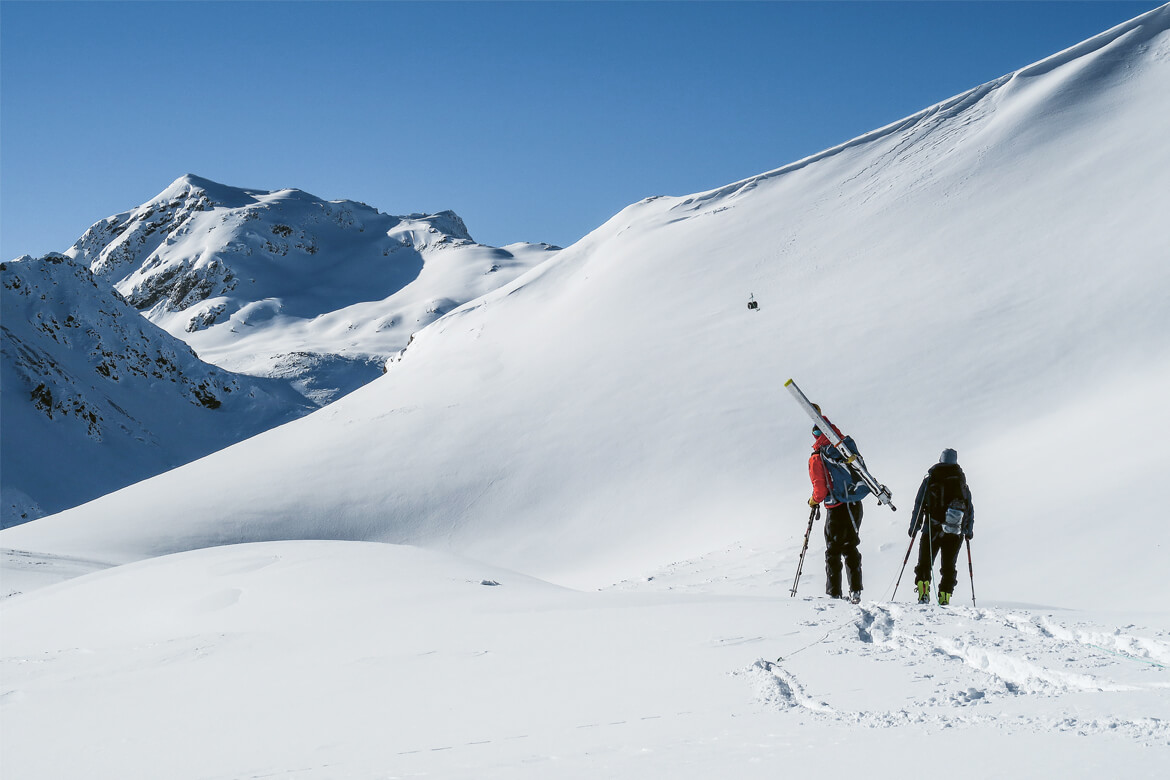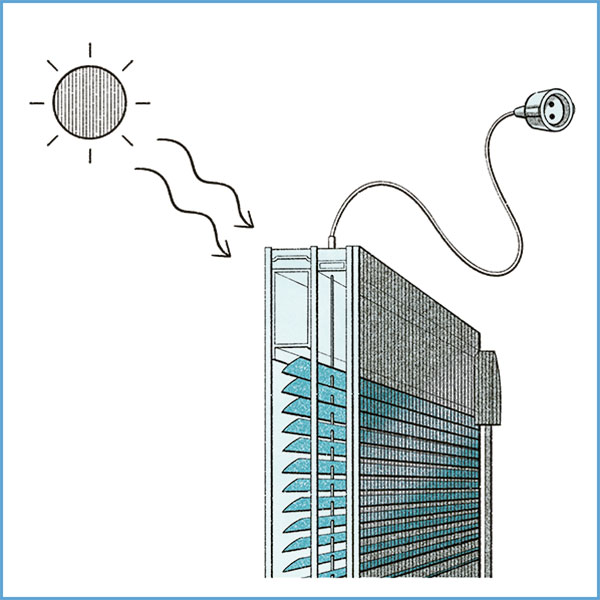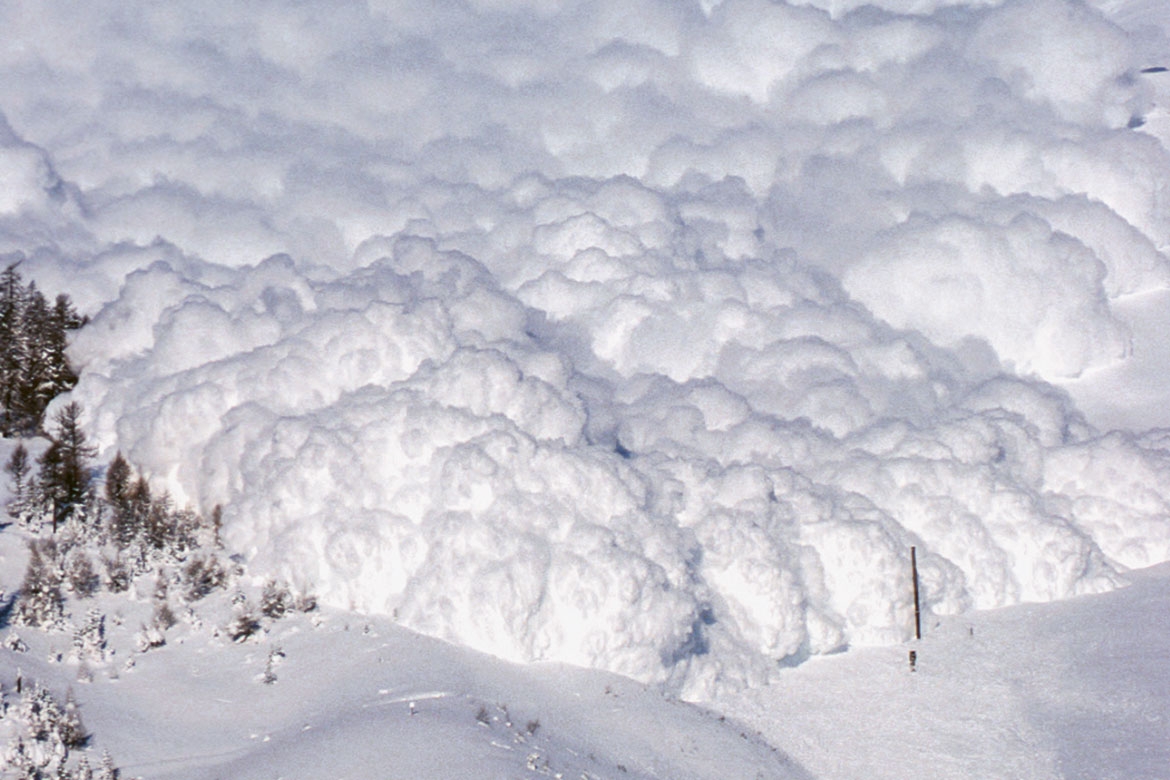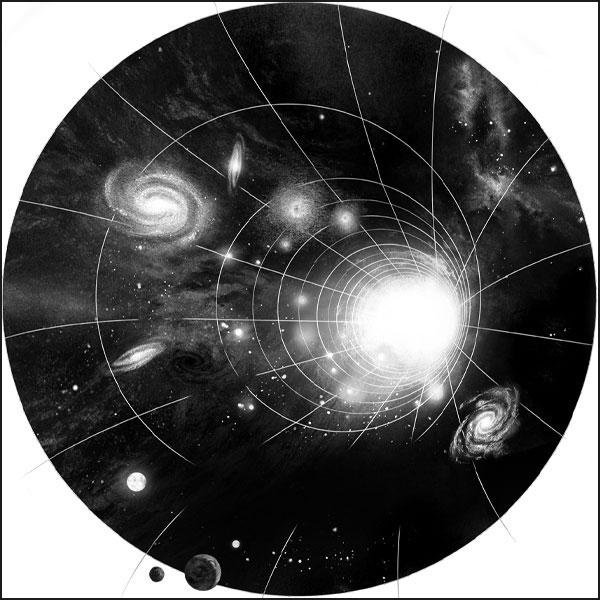Sun, snow and avalanches
Although it’s extremely rare for avalanches to reach populated areas in Switzerland, they are responsible for several deaths off-piste every winter.

Once or twice a week, Bastian Bergfeld goes on a ski tour. The avalanche researcher (here in the red jacket) throws his acceleration sensors into the snow in front of him, in order to measure how quickly fractures in the snow layers spread out. | Image: Alec van Herwijnen, SLF.
Early this year, a wall of snow stormed into the Hotel Säntis on the Schwägalp. Although it’s extremely rare for avalanches to reach populated areas in Switzerland, they are responsible for several deaths off-piste every winter. Bastian Bergfeld from the Institute for Snow and Avalanche Research SLF in Davos regularly ventures out onto the slopes in his quest to improve the science of avalanche prognosis.

Bastian Bergfeld studies the snow profile to determine the stability of the different layers. | Image: Stephanie Mayer, SLF
Bastian Bergfeld studied physics at the Ludwig-Maximilian University in Munich. He came across the field of avalanche studies while working on his Master’s degree, and was able to continue his research at the Institute for Snow and Avalanche Research SLF in Davos. He is currently writing his doctoral thesis about how avalanches are formed and how they can be prevented.
“Every ski tourer fears that sound. ‘Boom’, but it can be loud or soft, long or short. Regardless of how it sounds, it means danger. It means that a weak layer has broken under the snow slab you’re standing on. On steep ground, it could trigger a slab avalanche. One focus of my research here at the SLF is finding out why and when it goes ‘boom’. Ninety percent of avalanche accidents are the result of slab avalanches set off by people practising sport. It’s our goal to keep improving avalanche prognoses. One of the things we’re investigating is how the fracture spreads in the weak layer, and how fast. It happens at a crazy speed – sometimes at over 100 kilometres an hour.
“This means that once or twice a week, I have to take the first funicular of the morning up the Schatzalp, above Davos. That doesn’t bother me, I’m an early riser anyway. We’re equipped like ski tourers. Besides our standard safety equipment, such as avalanche transceivers, spades and probes, the Institute also provides us with airbag rucksacks. After all, we’ve got to go where avalanches happen. From the mountain station of the funicular, we ski up towards the Strelapass into the Steintälli. The conditions for our research are good there. We naturally don’t go to the steep slopes. We seek out places where we can trigger a fracture in the weak layer without getting into danger ourselves – in other words, we stay on flat terrain.
“Avalanches can be devastating, but luckily they’re also relatively rare events. This also makes them more difficult to investigate. There are many factors that play a role in each instance. There’s the composition of the snow cover, the wind, the temperature, the terrain. So we need a lot of patience in our work. In order to measure the speed at which the fracture spreads, we’ve developed eight acceleration sensors, each about as big as your fist. We ski in a line and throw them in a big arc in front of us, always several metres apart. They’re attached to a long strap so we can find them later in the snow. If we trigger a fracture, then these sensors can help us calculate how fast it spreads.
“I think many ski tourers have a false sense of security. They might have only narrowly avoided triggering an avalanche numerous times, but aren’t aware of it. You only notice it when it’s too late, because you don’t see what’s happening under the visible snow slab. You can’t know if the slab is already weak and on the verge of collapsing. As for me, I’m a passionate ski tourer, but I think it’s my research that has made me more careful. Today, I know just how many unknowns there are. Even carrying out a detailed snow profile and stability tests can only tell you what the conditions are on the spot. We experienced this last year when the SLF staff went on a trip together. We’d just drawn up a snow profile a few hundred metres before, and the snow cover seemed very stable. We skied on further into the valley and suddenly there was a loud ‘boom’. We all froze inwardly – but luckily, we were on the flat side of the mountain. It’s on a gradient of 30 degrees or more that things get risky.
“I have been very lucky to be doing research in a field I’m already passionate about in my hobby time. I hope I’ll be able to stay in Davos for a long time, because I really like it here. And I’ve noticed how important it is to experience the place in all weathers, every day. That means I have a much better understanding of the snow cover. When I study a snow profile, for example, I might think: ah, that was yesterday’s rough winds. My wife is also an enthusiastic ski tourer. Sometimes she can’t wait to go on a ski tour on the weekend, whereas I would rather lie at home on the sofa”.




